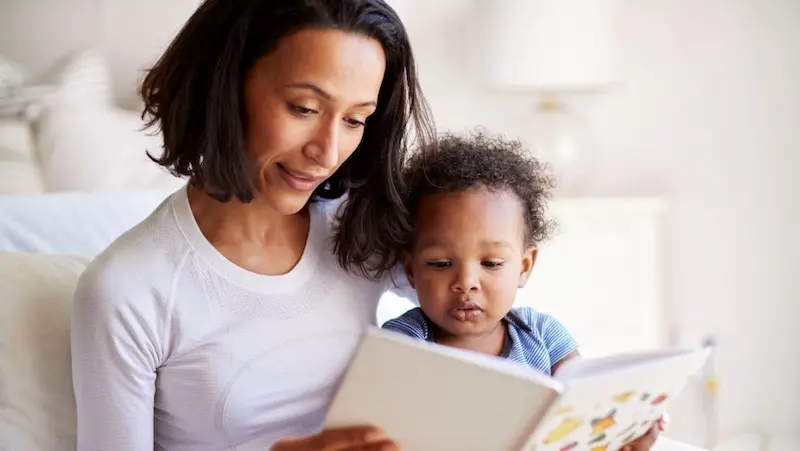In the enchanting journey of human growth, few things hold as much significance as early Language Development for Kids. It’s a captivating process through which young minds embrace the art of communication, forming the very foundation of their connection with the world.
This voyage of words, sounds, and expressions doesn’t merely shape a child’s ability to converse; it unlocks a realm of cognitive, emotional, and social growth that forever shapes their future. Let’s embark on a brief exploration into the profound importance of nurturing this delicate phase of language development and the remarkable impact it holds throughout one’s life.
Table of contents
- The Stages of Language Development
- Factors Affecting Language Development
- The Role of Play in Language Development
- Technology and Language Learning
- Language Development in School Settings
- The Link Between Language and Emotional Intelligence
- The Role of Parents in Language Development
- Conclusion
- Frequently Asked Questions
The Stages of Language Development
Language, the magical thread that weaves the fabric of human communication, is a marvel to behold. From the innocent babbling of babies to the eloquent speeches of adults, the evolution of language is a captivating voyage.

Stage 1: The Emergence of First Words
Picture this: a baby’s first attempts at communication, a symphony of coos and babbles that hold the promise of language. This is the foundation of the linguistic journey, where little ones venture to imitate the sounds they hear, experimenting with their vocal cords.
Stage 2: Vocabulary Explosion and Word Combinations
In what seems like a blink of an eye, the toddler’s world transforms into a playground of words. With an insatiable curiosity, they explore and absorb the language around them. This is the phase of vocabulary explosion, where children acquire new words at a breathtaking pace.
Stage 3: The Complexity of Sentences and Grammar
As the years roll on, the budding linguist embarks on a journey of grammatical discovery. Sentences stretch and twist, acquiring complexity and structure. Children start distinguishing between tenses, grasping the nuances of past, present, and future.
Factors Affecting Language Development

Environmental Influences: Family, Socioeconomic Status, and Education
In the tapestry of language acquisition, our environment weaves a crucial thread. Family dynamics, socioeconomic backdrop, and educational opportunities collectively shape linguistic growth and growth mindset activities for kids. The nurturing cocoon of a supportive family fosters vocabulary expansion and communication skills.
The Role of Genetics in Language Acquisition
Genetics, those microscopic blueprints of life, whisper secrets into our linguistic prowess. A predisposition to language development is embedded within our genes. Yet, it’s not a solo act; genes interact with environmental cues, forging the path to fluent speech. A delicate dance between nature and nurture shapes the outcome.
Identifying and Addressing Language Development Disorders
In this symphony of words, some face hurdles. Language development disorders can impede harmonious progression. Early detection and intervention are key. Speech therapists and specialists decipher the nuances, providing tailored strategies to bridge the gap.
The Role of Play in Language Development

Language Development Through Playtime Activities
Remember those giggles and nonsensical babbling when your little one engaged in peek-a-boo or tickling games? Well, those precious moments were laying the foundation for linguistic growth. Playtime activities, from peek-a-boo to hide-and-seek, actively engage children in communication.
Educational Toys and Games: The Language Lab in Disguise
Educational toys and games for kids to play are like stealthy language tutors, stealthily sharpening language skills while kids revel in play. Take building blocks, for instance. As children stack and create, they’re also constructing their vocabulary. The “big block,” the “blue block,” and the “tall tower” all become part of their lexicon.
Technology and Language Learning

The Impact of Screen Time on Language Development
Children and adults alike are spending more time engaged with screens, whether it’s through smartphones, tablets, or computers. While these devices offer interactive language learning apps, videos, and games, excessive screen time may inadvertently hinder the development of essential language skills and critical thinking skills for kids.
Effective and Safe Use of Technology for Language Learning
Quality Over Quantity: Choose language learning games for kids and apps and platforms that emphasize interactive communication and comprehension. Look for apps that offer real-time conversations, pronunciation practice, and contextual learning.
Balanced Learning: Supplement screen time with offline activities like reading books, engaging in group discussions, or participating in language exchange programs. These interactions foster nuanced language skills that extend beyond the screen.
Mindful Consumption: Set time limits for screen-based learning and encourage breaks. Encourage learners to reflect on what they’ve learned and apply it in real-life scenarios.
Language Development in School Settings

The Role of Teachers in Enhancing Language Skills:
Teachers, the unsung heroes of language evolution, wear the mantle of mentors, guides, and inspirations. They kindle the flame of curiosity, sparking discussions that weave intricate linguistic webs. With patience as their palette and knowledge as their brush, they instill vocabulary, syntax, and context into young minds.
Creating Language-Rich Classroom Environments:
A language-rich classroom is more than just walls echoing with words – it’s an ecosystem teeming with linguistic life. Teachers curate an environment where language thrives, adorning the walls with words, fostering reading corners, and igniting conversations that flow like a river.
The Link Between Language and Emotional Intelligence

Expressing Emotions Through Language
Picture this: a cozy coffee shop, rain tapping gently on the windows. Friends huddled around a table, sharing stories of triumphs and woes. What is the magic ingredient that transforms mere words into a symphony of emotions? Language, my friend.
Language is more than a tool; it’s a palette of colors with which we paint our innermost feelings. When we string words together, we’re not just conveying information; we’re crafting a canvas of emotion.
Helping Children Develop Empathy and Social Skills
Now, let’s journey to the realm of childhood – a time of innocence, curiosity, and boundless imagination. Here, the link between Language Development for Kids and emotional intelligence takes on a nurturing role.
As parents and caretakers, we hold a remarkable key to fostering empathy, leadership skills for kids, and social skills in children. When we engage them in conversations, we’re not just teaching kids kindness in their words; we’re shaping their emotional landscape. Those bedtime stories, heart-to-heart talks, and discussions about feelings are like seeds of empathy, sown in fertile young minds.
The Role of Parents in Language Development

Building Strong Parent-Child Communication
At the heart of this linguistic odyssey lies the cornerstone of strong parent-child communication. It’s not just about mere words exchanged, but the quality of those exchanges that fuels the linguistic engine. Children are like linguistic sponges, soaking up nuances, tones, and expressions from their parents.
Practical Tips for Enhancing Language at Home
1. Listen with Intent: Tune in to your child’s stories, no matter how fanciful or brief. Engage in active listening, showing them that their words matter.
2. Converse, Don’t Instruct: Engage in genuine conversations, rather than just instructing. Share tales of your day and ask about theirs. This exchange fosters a natural flow of word search for kids.
3. Read, Reimagine, Repeat: Reading for kids together isn’t just about books; it’s an expedition into the realms of imagination. Discuss the characters, predict story endings, and let your child’s imagination soar.
4. Narrate Daily Activities: Turn everyday tasks into Language Development for Kids adventures. Describe cooking escapades, outdoor activities for kids, and simple chores in captivating detail.
Conclusion
In the delicate tapestry of a child’s development growth, fostering Language Development for Kids emerges as a cornerstone of their radiant future. With every word spoken, and every story shared, we sow the seeds of curiosity and connection, paving the way for their blossoming imagination and cognitive prowess.
As parents, caregivers, and educators, our nurturing embrace fuels the flame of linguistic mastery, enabling them to articulate their thought for the day for kids, dreams, and aspirations eloquently. So let us weave this intricate thread with care, for in nurturing Language Development for Kids, we kindle a beacon that guides them toward a future aglow with possibilities and brilliance.
Join the revolution in education with Brightchamps. Our courses in robotics, coding, and financial literacy empower kids to become confident and capable learners.
Frequently Asked Questions
A1: Children usually start talking around 12 to 18 months, but the timeline can vary.
A2: Chat, read, and play together. Describe things, ask questions, and encourage conversation.
A3: No, bilingualism doesn’t usually delay speech. It might take a bit longer, but it’s beneficial.
A4: Some speech hiccups are common. If it persists after age 3, consider a speech checkup.
A5: Sure, apps and interactive tools can make learning engaging and fun.
Q6: What if my child shows signs of a language issue?
A6: Early action is key. Consult a speech-language expert for guidance.


 We are an army of educators and passionate learners from BrightChamps family, committed to providing free learning resources to kids, parents & students.
We are an army of educators and passionate learners from BrightChamps family, committed to providing free learning resources to kids, parents & students.











